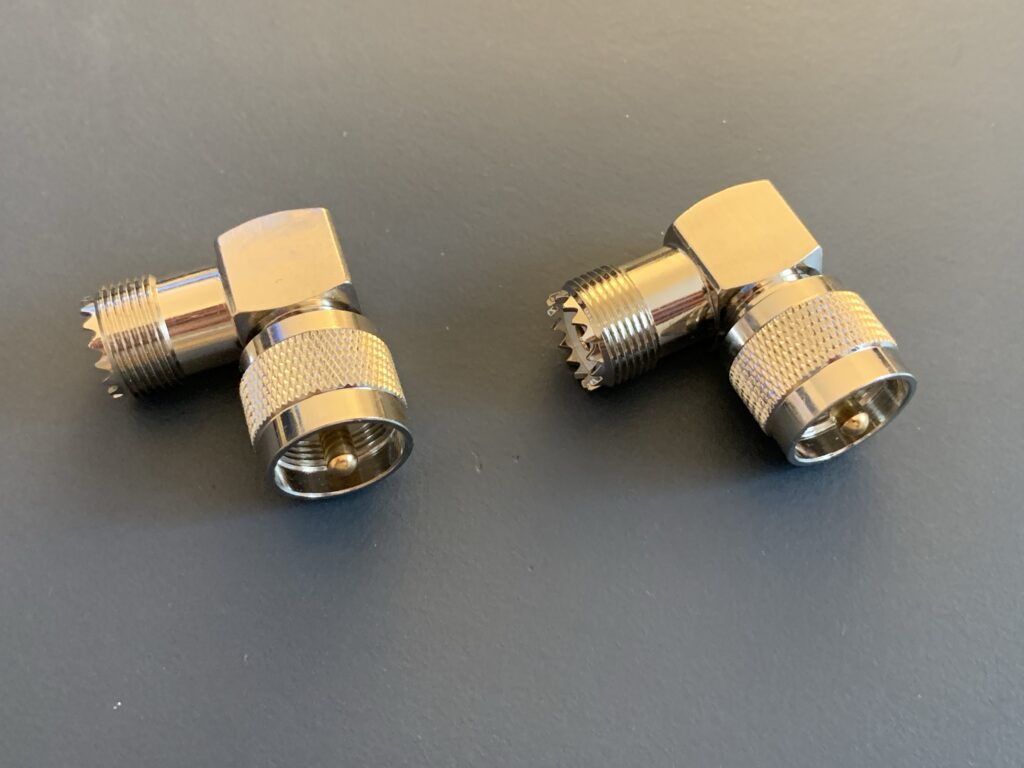In a previous post, I noted how the AIS sentences had caused me to think that the VSWR alarm was being triggered, but in fact they were inactive alarms. However, I decided to get a baseline SWR reading, and a fellow club member was able to meet me on board today to conduct some tests. The first test was taking the AIS unit out of the path completely, and using the VHF to transmit at both 1W and 25W to check power levels – 1W on the VHF registers as about 0.5W on the meter, which is a bit odd, but 25W is close enough (it pegs the 20W setting, as you’d expect, and gets close to the right level on the 200W scale). We then calibrated the meter (archive), and took a SWR reading at 25W, with the cabling going from VHF radio -> meter -> antenna. 1.1 on the SWR scale; pretty good.
With the radio + feeder cable + antenna known to be good, we put the AIS unit back inline – it’s a splitting model, and should not interfere with the VHF signal in transit to the antenna, regardless of whether the AIS unit is powered up or not. SWR promptly read 2.5+! That’s not a good reading – better than 3+, but still not good. The warning light on the AIS unit also turned on when doing this test, and I’m sure the AIALR sentence would have said A,V instead of V,V (I didn’t have the laptop plugging in and logging).
We stared at it for a moment, and then I had an “ah ha!” moment in terms of reducing the complexity of the path. The two 90-degree elbows that I installed in late 2020 were unscrewed from the top of the AIS unit, and we re-tested the path (with the AIS in the path). SWR of 1.1.

Brian was pretty sure the elbows shouldn’t have been as loose as they were – so we examined them carefully. They had the right lugs/nubs for matching up to the tooth pattern of a SO-239 connector, and when connected to a spare double SO-239, they slotted right in and stopped the elbow from moving. Put one back on the AIS SO-239 connector, and even screwed down tight it just spun freely. Our guess was that the shield wasn’t attached properly because of this, and the elbows have been removed – I’ll find another way to put in strain relief for the two cables.
So, while the AIALR was misleading at the time, the end result is a bad component in the radio path has been found and removed. Success!